From War to Wow: How Missoni and Marimekko Changed Fashion with Colour and Creativity
Author: Grace Pan
Date:14 Apr 2025
In the colourful world of textile and fashion design, few names are as immediately recognisable as Missoni and Marimekko. Both brands have become iconic for their bold patterns, vibrant colour palettes, and timeless appeal. As I am writing a serious of stories of designer brands famed by their pattens in this blog, these two brands, one well-known as its zigzags (Missoni), the other well-known as its flowers and stripes (Marimekko) stood out in my brain. Today, I would like to take a close look of the two brands side by side, trying to find out why they became successful in the post-war fashion world.
Despite originating in different parts of Europe—Missoni in Italy and Marimekko in Finland—these two houses share a surprising number of commonalities in their origin stories, design philosophies, and cultural influence. Yet, they also diverge significantly in aesthetic expression, business evolution, and cultural grounding. A comparative exploration of these brands reveals how shared values such as optimism, individuality, and post-war reinvention have taken on uniquely different visual and commercial forms.
Post-War Origins and a Spirit of Reinvention
Missoni and Marimekko were both born in the aftermath of World War II, a time when Europe was grappling with reconstruction, recovery, and redefinition. The war had not only devastated infrastructure but had also flattened creative expression. In this landscape of rebuilding, both brands emerged as beacons of artistic renewal and innovation.
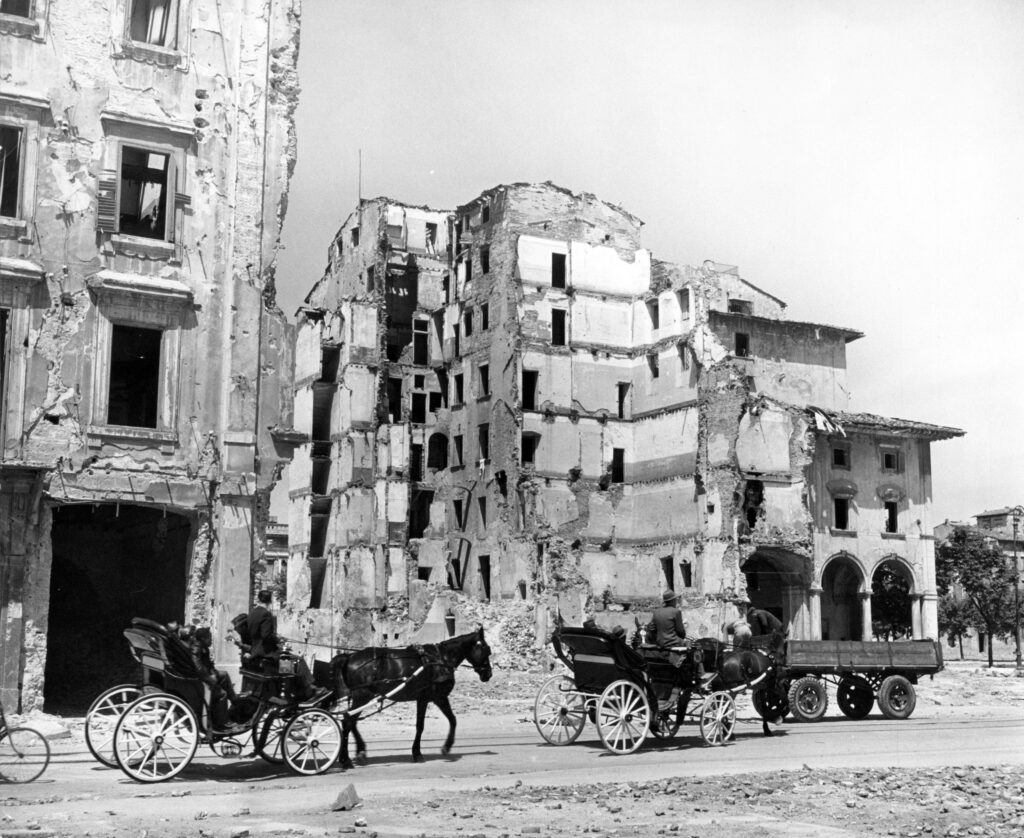
Alfred Eisenstaedt/Life Picture Collection/Shutterstock
Missoni, founded in 1953 by Ottavio and Rosita Missoni, began as a knitwear workshop in Gallarate, Italy. Their vision was radical: to elevate knitwear into a high fashion medium through the interplay of colour, texture, and geometry. Their work coincided with Italy’s post-war “economic miracle,” which fostered a renaissance in Italian fashion and design.
Marimekko, established in 1951 by Armi Ratia in Helsinki, was similarly revolutionary. Ratia believed that the world needed a burst of optimism and joy after the grim war years. Marimekko’s printed textiles were designed to be liberating—free from the constraints of convention, focusing on bold, flat patterns, and bright colours.
In this way, both brands became symbols of post-war creative optimism. They channelled the energy of the time into textiles that were anything but conservative—rejecting the greys of the war era in favour of fearless colour.
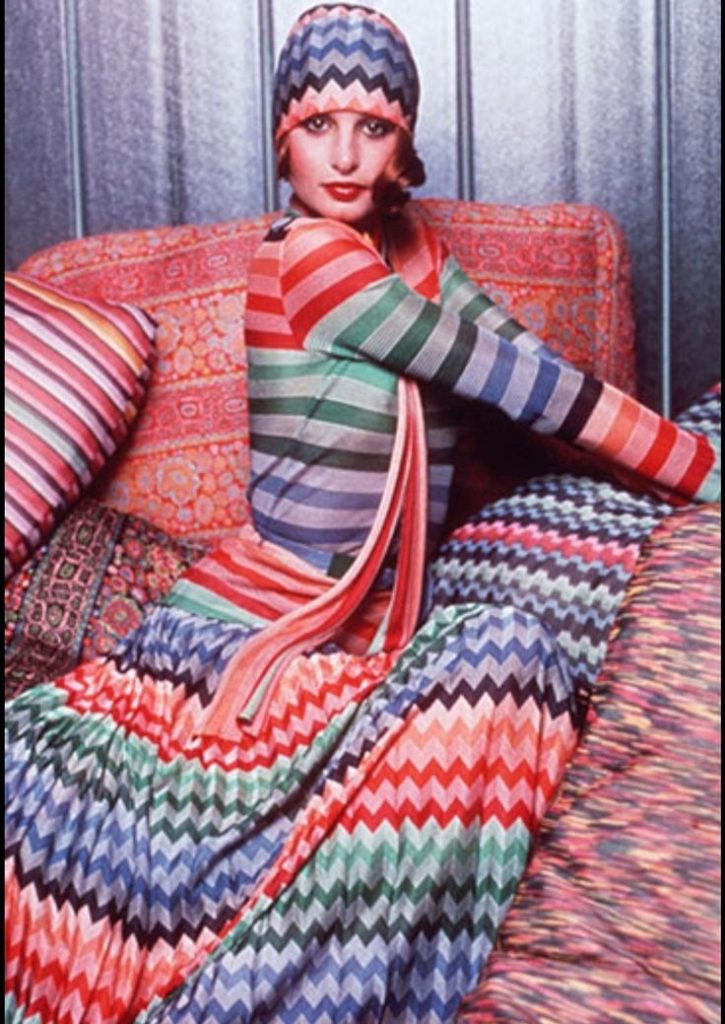
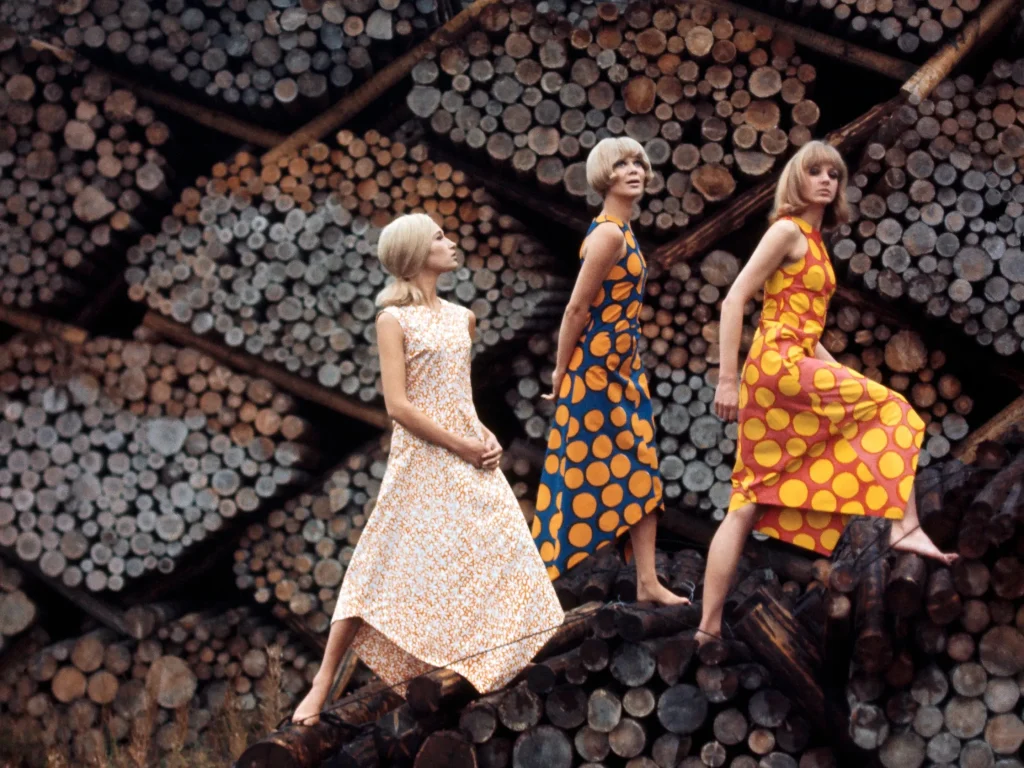
The Power of Pattern
At the heart of both brands lies an almost obsessive commitment to pattern—not just as decoration, but as a storytelling medium. Both Missoni and Marimekko have become almost synonymous with a single signature pattern.
For Missoni, it’s the zigzag. Their chevron stripe motif in kaleidoscopic colour combinations has become a universal symbol of the brand. The technique used in their knitwear, an intricate combination of weaving, dyeing, and stitching—produced textures and movements that were almost hypnotic.
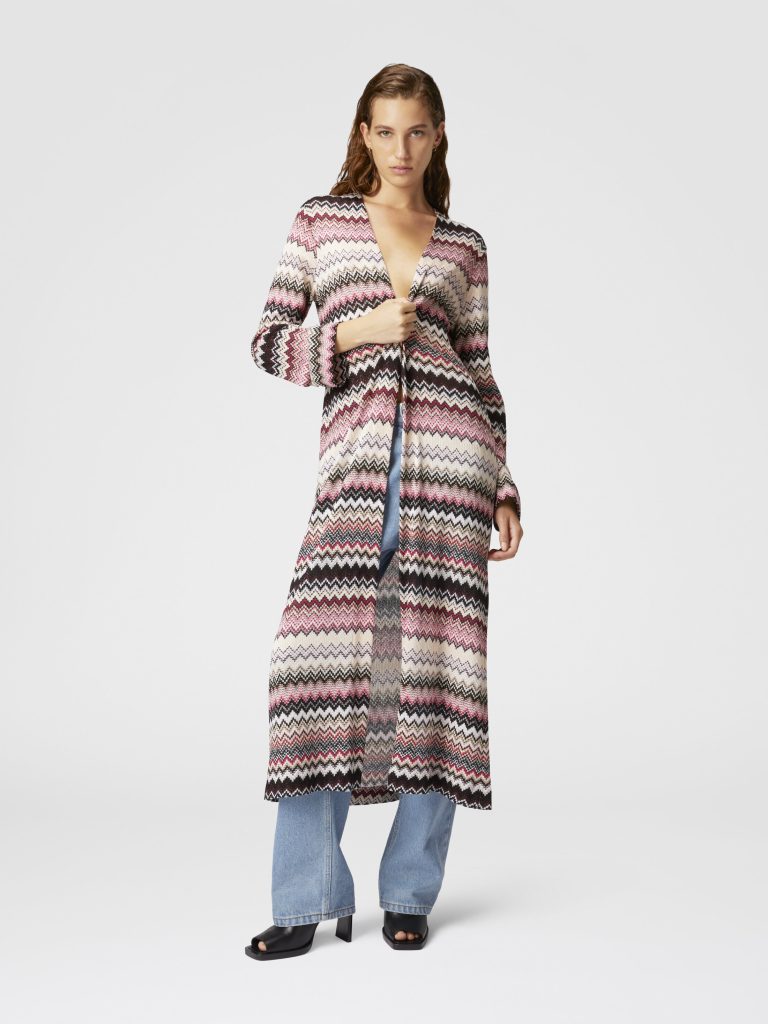
Marimekko’s most iconic design is arguably the Unikko (poppy) pattern, created in 1964 by Maija Isola. Despite Ratia’s initial stance against floral prints, this abstract floral design became a visual manifesto of Marimekko’s playful modernism. Like Missoni’s zigzag, Unikko is endlessly reinterpreted in new colourways and scales.
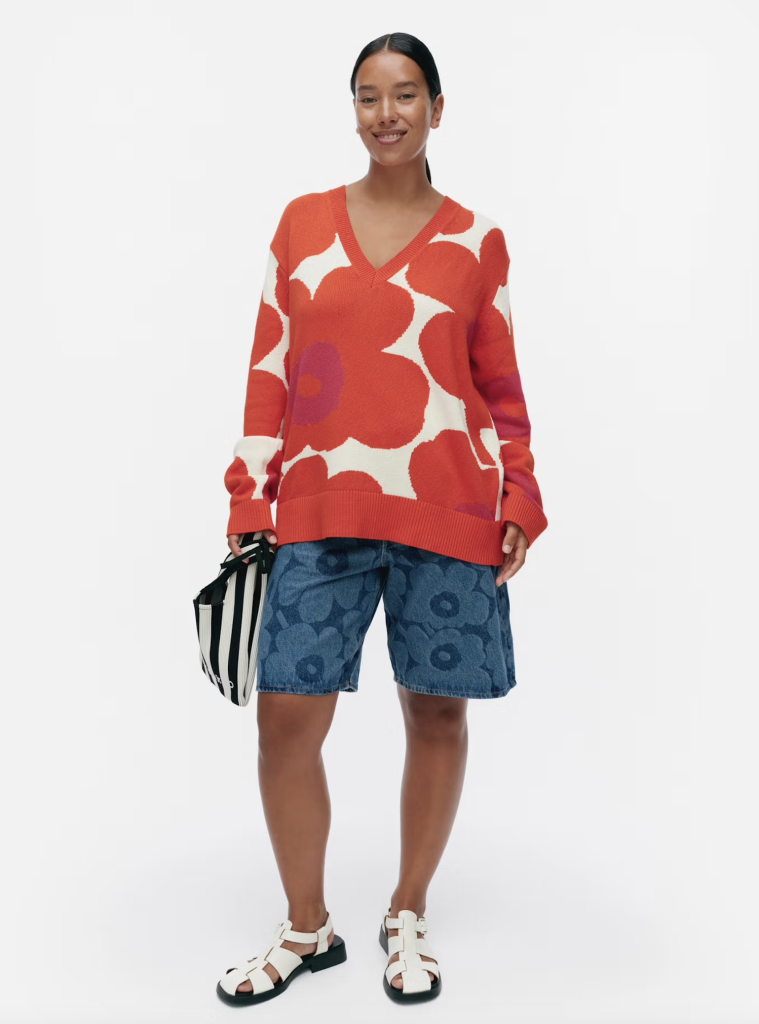
Both houses embrace repetition and modularity, turning simple units—zigzags, florals, stripes, and dots—into dynamic visual systems. However, the emotional quality of their patterns differs. Missoni’s designs tend to evoke warmth, rhythm, and sensuality, while Marimekko leans toward clarity, boldness, and conceptual play.
Colour as Identity
Colour is central to both brands’ identities, used not just for aesthetic pleasure but also for emotional expression and brand recognition.
Missoni’s palette is richly layered, often evoking the natural landscapes of Italy—the terracotta of Mediterranean earth, the greens of olive groves, the deep blue of coastal waters. The brand’s luxurious knit textures make colour feel tactile and immersive.
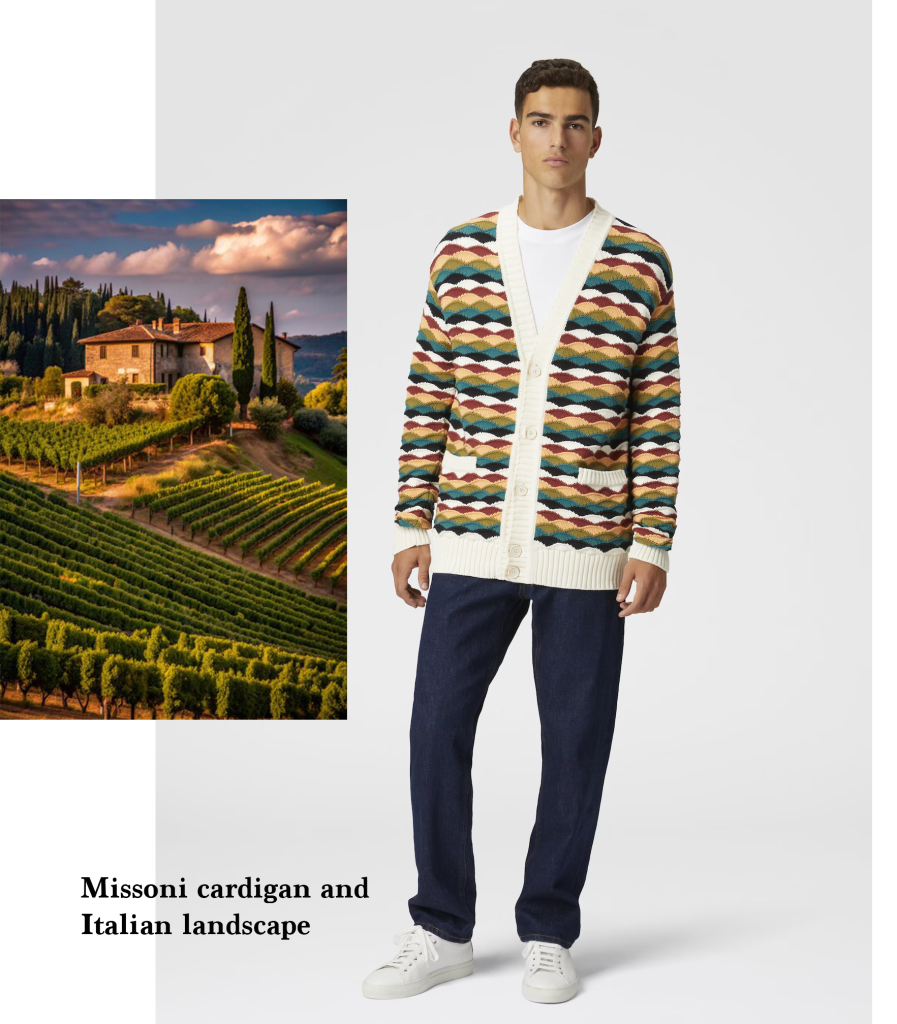
I found this cardigan on Missoni ‘s official website (https://www.missoni.com/) 2025, and easily matched it with the Italian landscape. What do you think?
In contrast, Marimekko’s use of colour is more graphic and flatter, drawing from Nordic minimalism and modernist ideals. Their colour schemes often feature bold primaries and contrasting tones, creating sharp, memorable visuals. The use of white space is more pronounced in Marimekko, reinforcing the simplicity and functionality rooted in Scandinavian design.
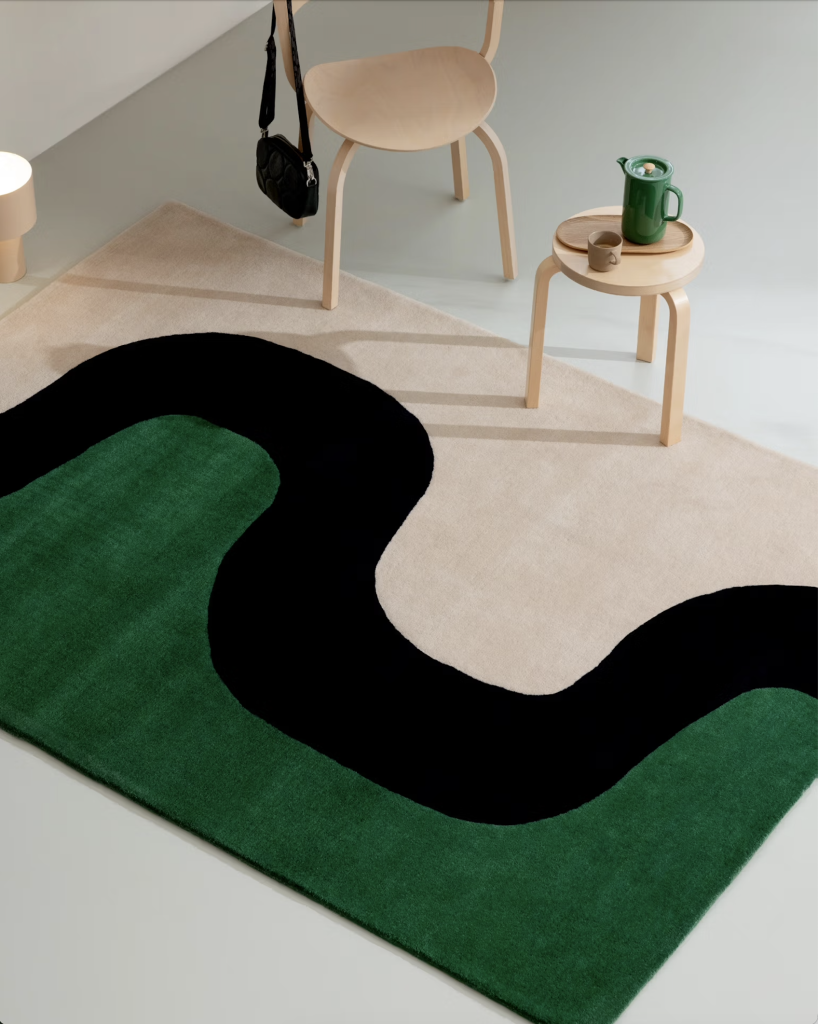
Marimekko Seireeni Rug (from its official website 2025) – I especially like the pine green which represents the Scandinavian forests. The warm white contracts the strong black curve which can also represent the snowy mountain.
Cultural Roots and Global Appeal
The cultural identities of Missoni and Marimekko are deeply embedded in their work, yet both have achieved global reach by translating those identities into universal expressions.
Missoni is rooted in Italian artisanal tradition and the luxury fashion world. Over the decades, it has maintained close ties to high fashion, collaborating with institutions like Milan Fashion Week, while also expanding into lifestyle with homeware and even hotels. Its appeal lies in its sophisticated bohemian aesthetic—a blend of artistry, craft, and Mediterranean ease.
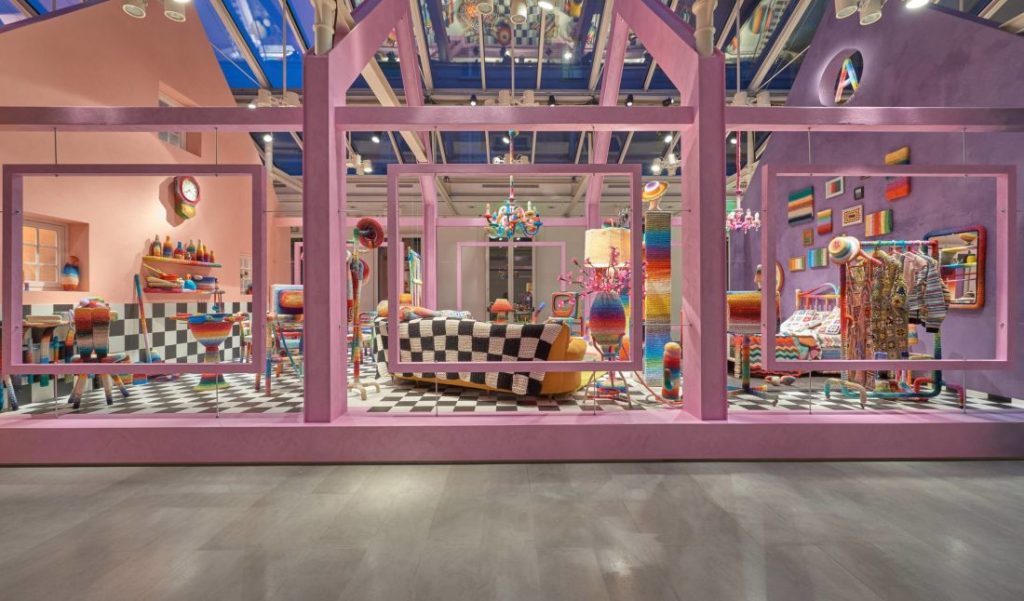
Marimekko, meanwhile, was always more democratic in spirit. It positioned itself as a lifestyle brand early on, producing not just clothing but also home textiles, ceramics, and accessories. Marimekko designs are often seen as statements of everyday empowerment, especially for women. Their silhouettes are frequently loose-fitting and functional, emphasizing comfort and freedom over glamor.
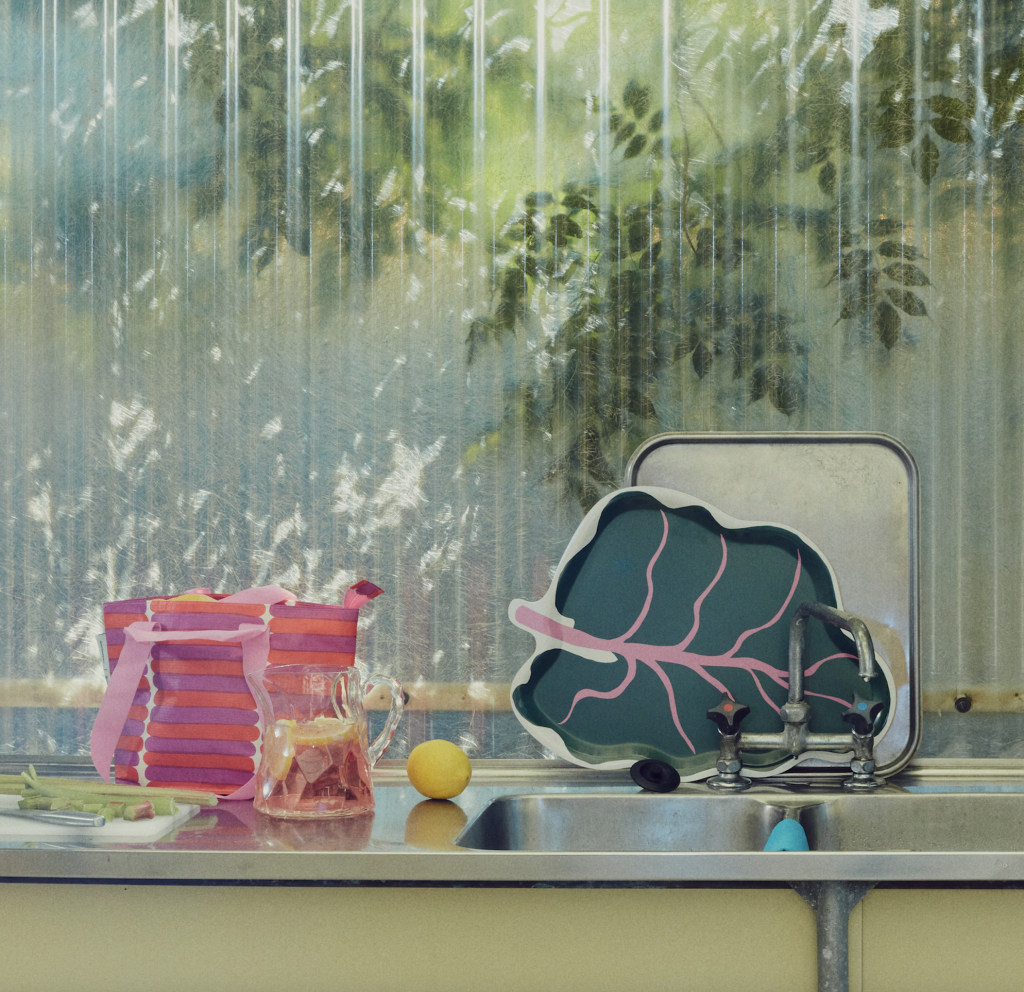
This divergence speaks to their different audience positions: Missoni targets the luxury market, while Marimekko is more accessible, leaning into design as a way of life rather than a status symbol.
Innovation and Enduring Legacy
Both brands have stayed relevant by staying true to their core aesthetics while evolving with the times. Missoni, now managed by the next generation of the family, has balanced legacy and modernity, collaborating with high-street retailers like Target and engaging in digital storytelling.
Marimekko, similarly, has had a resurgence in recent years, thanks to new creative leadership and collaborations with global brands like Uniqlo and Adidas. Its commitment to sustainability and timeless design makes it especially resonant in today’s value-driven market.
The success of both of the brands also inspired others in the pattern design industry. I would say another name I have been interested in for last 20 year is Kenzo. This France-Japan joint brand was founded by Kenzo Takada in the 1970s. It mixes bold florals, ethnic prints, and explosive colour in a way that aligns with Marimekko’s joyful and global aesthetic, yet often use the knitwear format to present its products like Missoni.
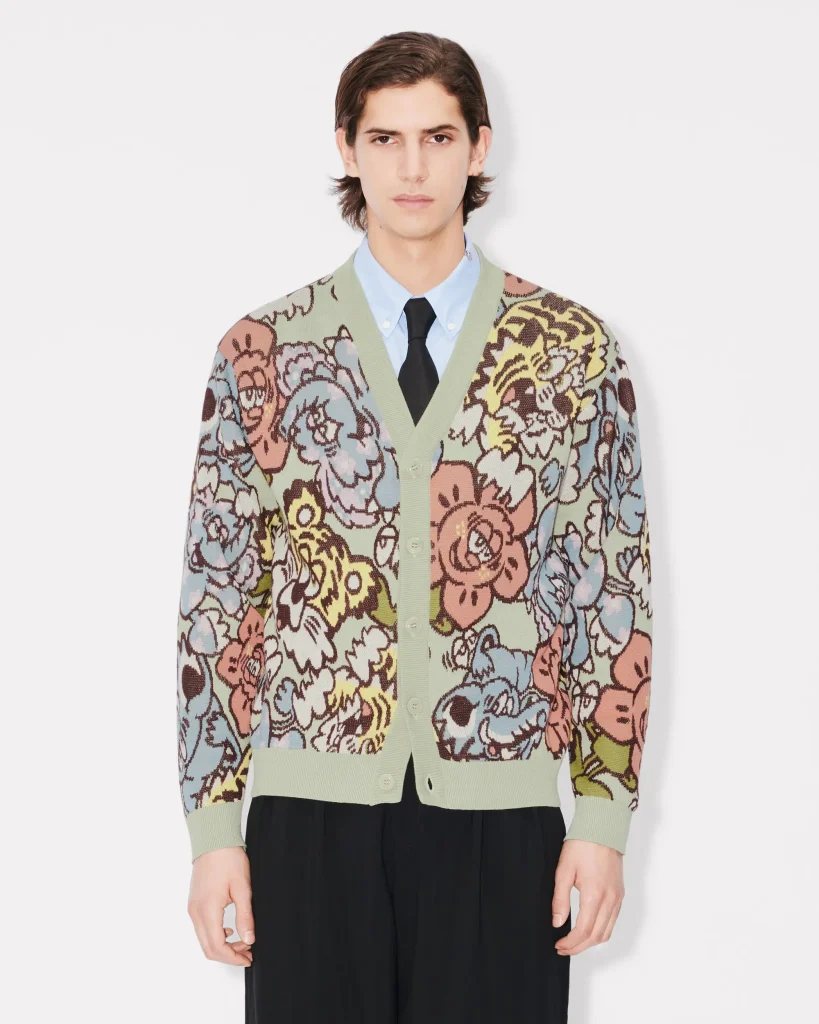
Missoni and Marimekko are two sides of the same post-war coin: bold, optimistic, and deeply rooted in the power of pattern and colour. They share values of artistic integrity, individuality, and reinvention, but express these values through distinctly different visual languages and business models.
Missoni is the expressive, warm-toned storyteller of Italian knitwear luxury; Marimekko is the bold, clean-lined voice of Finnish democratic design. Together, they demonstrate how textile design can transcend national borders, becoming symbols of beauty, resilience, and innovation that continue to inspire the fashion world today.
Our Big Fame in Prints celebrates the legacy of the world’s most famous textile and print pioneers. This series delves into their business story, timeless designs, and enduring influence on global fashion, interiors, and cultural aesthetics.]
Other articles under this series:
The Story of Marimekko: Global Success in Bold Visions
Art You can Wear – Vera Neumann, A Timeless Visionary in Colour and Pattern
Vera Neumann: The Woman Who Made Scarves a Canvas of Art
Missoni: The Legacy of Italian Knitwear and its Iconic Patterns
Timeless Knitwear with Missoni Designs and its Brand Inference
Saddles to Silk: The Evolution of Hermès into a Global Luxury Icon
The Art of Hermès Scarves: A Brief Analysis That Defines Luxury
Liberty – The Fascinating History and Its Iconic Fabric Prints
Liberty Patterns – The Artistry and Versatility of its Timeless Elegance
If you would like to learn more about fabric, craftsmanship, manufacturing process, or need further cooperation, please email us via the email address vip@docsunhomeandliving.com, or click the image below to visit our official website. Also you can visit Docsun Silk for Daily outfit guidance.
2024.11-1024x1024.png)
